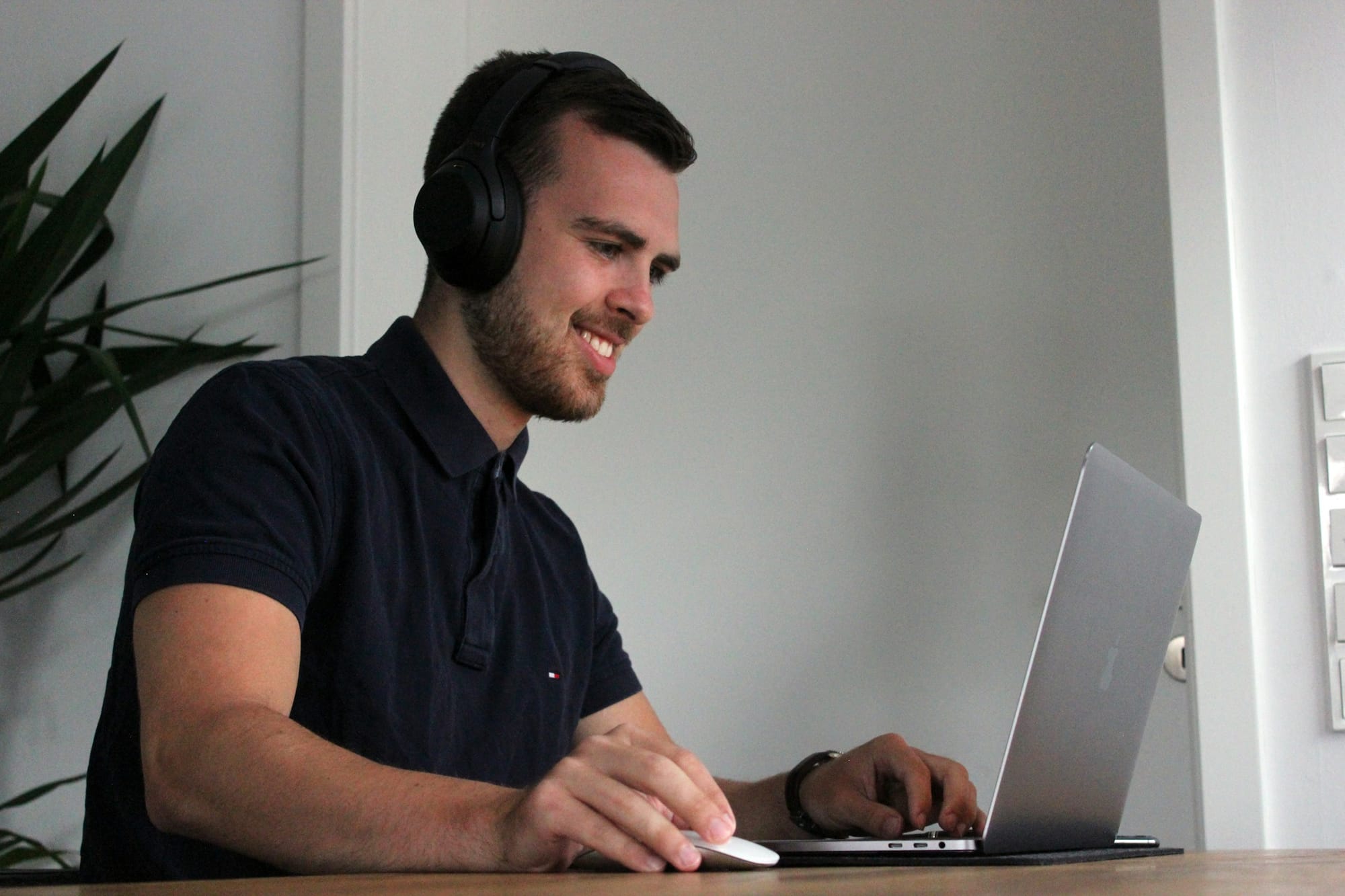We’ve all been there: you sit down to work, ready to dive into a big project. But as you open your computer, your mind goes blank. You can’t remember your last steps, and it takes you far too long to reorient yourself to the task. Suddenly, you’re overwhelmed and stressed as you try to pick up the pieces and get things back on track. This is a common scenario in today’s fast-paced work environments, and all the factors of productivity can contribute to it. Understanding the different elements of productivity workflow can help you make sense of the chaos and improve overall performance. This article will explore the many factors affecting workplace and employee productivity so you can identify what’s slowing your team down and develop a plan to get things running smoothly again.
Antispace’s AI-based productivity operating system can help you achieve your productivity goals by helping you understand and boost the factors of productivity affecting your unique workflow.
What is Workplace Productivity?

Employee productivity, or workforce productivity, is the quantifiable measure of an employee’s output or efficiency in completing their assigned tasks or responsibilities within a specific period. This can be measured in terms of the work’s quantity, quality, or timeliness. The sustainable success of any organization depends on employees' efficiency in completing their assigned tasks and responsibilities at a high quality and within a specific timeframe.
As companies evolve, measuring and improving employee productivity is becoming increasingly important. The correlation between employee productivity and business outcomes (both in the short and long term) and return on investment (ROI) is pertinent for considering activity as productive.
Driving Productivity Through Deliberate Action
Without such a correlation, an action cannot be deemed effective. A company’s employees are the driving force that sustains its growth through their collective skills, experience, knowledge, attitudes, and motivations.
Productivity cannot be achieved spontaneously. Implementing practices that promote it requires a conscious effort. By deliberately prioritizing it, companies can bring about significant positive changes that will benefit their business in the long run.
Related Reading
- What Is Productivity Software?
- Pyramid of Productivity
- Small Business Intelligence
- Using AI to Enhance Business Operations
- Methods to Improve Productivity in Operations Management
- AI Workflows
12 Factors Affecting Workplace & Employee Productivity

1. Work Environment: The Good, the Bad, and the Toxic
An employee's work environment significantly impacts their well-being and performance. Improving these areas helps avoid a toxic work environment and boosts productivity. It includes many elements such as:
- Management styles
- Company values
- Company culture
- Communication styles
- Leadership
- Trust in the workplace
2. Growth Opportunities: Build the Ladder Before You Need It
Many individuals are motivated by career growth and professional development opportunities. They like to be challenged, work on interesting projects, feel like their work is valued, and be rewarded for their impact. Try building your career growth paths to build team momentum and increase productivity.
3. Opportunities to Socialize: Teamwork Makes the Dream Work
Not everyone wants to work in an office every day. And some individuals would rather not participate in group events. Creating opportunities for employees to meet in person or virtually is essential. Socialization helps build trust, increase creativity, boost collaboration, and bolster team communication. These events can be social or work-related team-building activities.
4. Manager and Peer Feedback: Reward and Recognition
Employees thrive in organizations with healthy feedback cultures. A recent survey showed that 72% of employees consider recognition the most impactful element of employee engagement. This is not to say that all feedback has to be praise. Ensuring regular check-ins with employees and offering opportunities for them to give feedback can help increase productivity.
5. Psychological Safety: The Best Kind of Safety Net
Psychological safety directly correlates to productivity in the workplace. Higher belonging is also positively correlated with increased focus, strategic planning, and goal attainment. These benefits make a strong case for developing a psychologically safe workplace by leveraging communication, vulnerability, and empathy.
6. Access to Tools and Systems: Setting Employees Up for Success
Another critical factor in developing a more productive team is improving the digital employee experience. This involves offering the tools individuals need to do their work most efficiently. They can be transactional, such as:
- Sales enablement tools
- Focused on maximizing soft skills, such as:
- Project management
- Collaboration tools
Additionally, many teams function more effectively within some form of structure. So, systems and processes are essential for employees to do their best work.
7. Clear Expectations: No One Likes Surprises
Setting and communicating expectations before starting a project can save teams an immense amount of time. Investing this time upfront often reduces the time needed for revisions or even redos of specific tasks.
8. Time Management: The Balancing Act of Productivity
Highly productive employees tend to have good time management skills. Organizations can encourage good time management by assigning reasonable workloads and offering employees opportunities to learn how to manage their time better. Employers can detract from good time management by interfering with employee workflows, such as micromanaging or scheduling too many meetings.
Measure how much time employees spend on work tasks and set productivity expectations that align with these metrics. Balance workloads and ensure teams have enough time to do the amount of work expected of them.
9. Engagement and Culture: The Heart of Productivity
A strong company culture and high engagement levels lead to higher productivity by fostering employee motivation and a sense of belonging. Employees who feel connected to their colleagues and work are more productive overall. They’re also more creative and likely to stay with the company long term.
Create an intentional, supportive company culture through feedback, recognition and rewards, open communication, and continuous growth. Encourage employees to create strong bonds through social activities and shared goals.
10. Health and Well-Being: The Overlooked Elements of Productivity
Mental and physical health are increasingly crucial to employee productivity, especially in our current era of high burnout. Employees who can prioritize their well-being perform better, not just because they’re well enough to do so but also because they feel their organization cares about them as people. Companies that want more productive employees need to champion employees’ health, both physically and mentally.
Offer health benefits that include mental health, vision, and dental care. Encourage employees to take breaks, whether a daily 15-minute walk or paid time off. Provide wellness activities or benefits such as gym memberships. Empower managers to create an environment where employees can make decisions that improve their work-life balance.
11. Training and Development: Preparing for the Next Level
Training increases productivity, both in current roles and for new responsibilities as employees move into higher roles. In addition to the direct benefits of training, offering development opportunities shows employees you’re invested in them, which motivates them to give their best effort.
Use productivity monitoring tools to assess employee skills gaps or identify underutilized employees. Offer comprehensive internal skills training and encourage employees to seek training opportunities.
12. Incentives and Recognition: The Good Stuff
Regular rewards and recognition increase employee motivation and job satisfaction, increasing productivity. Employees who see what good performance earns them are more motivated to perform. Regular recognition programs also build camaraderie and morale among employees who cheer each other on for their successes.
Incentives and Recognition Matter
Create clear incentive programs, including pathways to promotions or increased pay, and communicate these programs with employees. Regularly announce achievements across the organization, whether individual contributions or department-wide initiatives.
Apply recognition consistently across departments and use data to show why and how employees earn bonuses, promotions, or other incentives. Recognize personal milestones, such as work anniversaries or when employees achieve goals.
Related Reading
- Productivity Software Examples
- Microsoft Productivity Tools
- Improve Focus and Productivity
- Productivity Tools for VAs
- Best Free AI Tools
- Best AI Tools for Math Teachers
The Value of Employee Engagement and Productivity

The Bureau of Labor Statistics reported that productivity had increased by 1.8% in 2019. This increase in productivity means that employees are efficient and can complete tasks on time, helping to improve company profits. But then the pandemic hit, and everything changed.
The sudden shift to remote work left many businesses concerned about employee productivity. The good news? Remote employees adjusted by working one hour longer daily than their office counterparts, increasing overall productivity. More recently, according to Accenture, businesses that invest in technology to improve employee productivity are likely to see a 7.4% increase in revenue growth.
Higher Employee Productivity Leads to Increased Engagement
Employee productivity directly impacts employee engagement. Engaged employees are more productive, so when organizations focus on improving productivity, they can help enhance employee engagement and morale. Improved productivity can help employees feel more in control of their work and reduce stress, particularly during change or uncertainty.
For example, as remote work emerged in response to the COVID-19 crisis, many employees experienced higher productivity levels, which helped alleviate anxiety as they adjusted to a new way of working.
Productivity Helps Businesses Stay Competitive
Focusing on productivity can help improve a company’s bottom line, allowing it to remain competitive. When businesses experience downturns, their profitability suffers, and they may need to make cuts that affect employees, such as layoffs or reduced hours.
Companies can enhance their financial performance and avoid such measures by improving productivity. Increased productivity helps organizations meet their objectives and goals and remain on track during challenging times.
Improved Employee Productivity Increases Business Resilience
When business operations are disrupted, companies with higher productivity levels can more easily absorb the shock and recover.
For example, when the COVID-19 pandemic hit, organizations with solid remote work policies and high employee productivity were better prepared to transition to a virtual environment. Businesses can maintain continuity and resilience during challenging times by improving productivity before a crisis.
Productivity Supports Innovation and Long-Term Growth
When organizations enhance productivity, they can improve overall performance and create a culture of continuous improvement. Higher productivity can drive innovation by providing employees the resources and time to think creatively and develop new ideas. Innovation helps businesses adapt to changing market conditions and ensures long-term growth and success.
Effortless Productivity with Antispace
Antispace transforms your daily workflow with an AI-powered, gamified productivity operating system. Our platform seamlessly integrates with your essential tools, Email, Calendar, and Notes, while our AI assistant handles everything from email management to task organization.
We've built intelligence into every aspect of your workflow:
- Smart email responses
- Automated calendar management
- Enhanced note-taking
- Streamlined task coordination
Your AI Executive Assistant for Effortless Productivity
Antispace is your virtual executive assistant. It reduces context switching and automates routine tasks, letting you focus on what matters while our AI handles the rest. Whether you're brainstorming ideas, managing communications, or coordinating projects, Antispace turns productivity from a chore into an engaging experience.
Get started for free with one click today.
The Cost of a Disengaged Workforce

According to Gallup’s latest State of the Global Workplace report, disengaged employees cost the world $8.8 trillion in lost productivity. And with only 23% of employees saying they were engaged at work in 2022, leaders can’t overlook how employee disengagement affects their bottom line. Employee disengagement happens when individuals are emotionally disconnected from their work and unmotivated to perform at their fullest potential. It’s rarely the problem of a few indifferent employees; disengagement impacts the entire organization, reducing productivity and overall performance across departments.
Lower Productivity
The most apparent consequence of low employee engagement is its impact on productivity. According to Forbes, disengaged employees are 18% less productive than engaged employees. When people disengage, they tend to miss deadlines or perform lower-quality work. They also call in sick 37% more often, leading to more missed work or task redistribution.
Higher Turnover
Employers with highly disengaged employees see more people leave for other opportunities. One Gallup study estimates disengagement leads to as much as 43% higher turnover. When people leave your organization, they take all their training and know-how. Plus, you’ll pay 33% of an employee’s annual salary to find their replacement.
Difficulty Hiring New Employees
Turnover is already bad for your organization. Worse, when employees leave because they’re disengaged, you earn a reputation as a bad workplace, making it harder to attract and retain top talent going forward.
Employees who leave on a sour note damage your ability to attract talent when they post negative reviews on hiring sites. Disengaged employees who stay scare candidates away through word of mouth or create a hostile work environment.
Negative Influence on Morale
Disengagement spreads among employees and damages morale across your organization. Even engaged team members feel the drain of actively disengaged employees, whether from filling in the gaps for an employee who’s not pulling their weight or listening to complaints. HR professionals and managers also spend extra time with disengaged employees to diagnose problems, create remediation plans, and more.
Decrease in Creative Problem-Solving
Engaged teams contribute to the organization through creative ideas and are eager to solve problems proactively. In contrast, disengaged employees are less likely to contribute or seek innovative solutions. They may barely meet the requirements of their job descriptions, let alone raise their hands with creative ideas.
This kind of disengagement shows up as “quiet quitting,” when workers hold themselves strictly to their job descriptions and nothing more. Disengaged employees may take it further and discourage others from contributing to the organization's greater good.
Poor Customer Service
Engaged business units provide better customer service because they’re interested in outcomes for both the customer and the organization. Disengaged employees may treat customers with less respect or be unwilling to go above and beyond to solve a problem. They also produce lower-quality services or products, which leads to customer complaints.
Let Our AI-based Productivity Operating System Handle Your Boring Work
Antispace is revolutionizing the way we think about productivity and workflow. This innovative platform uses artificial intelligence to transform your daily workload into an engaging experience. Antispace integrates with the tools you already use, like email, calendar, and notes, to improve functionality and make your life easier.
With Antispace, you can say goodbye to mundane routine tasks and hello to your new virtual executive assistant. Antispace uses gamification to make productivity fun while reducing context switching and creating a seamless transition between project coordination, communications, and brainstorming. Whether working on a team project or managing tasks independently, Antispace helps you streamline your workflow for ultimate efficiency.
How Antispace Makes Productivity Easier
Antispace has a simple interface that allows users to navigate productivity tools for their unique projects easily. The platform's AI assistant handles repetitive tasks, so you don't have to.
For example, intelligent email responses can draft replies based on your preferences. You can also automate calendar functions to reduce scheduling conflicts, organize notes to track tasks, and easily find information when needed. The more you use Antispace, the more personalized it becomes to your working style.